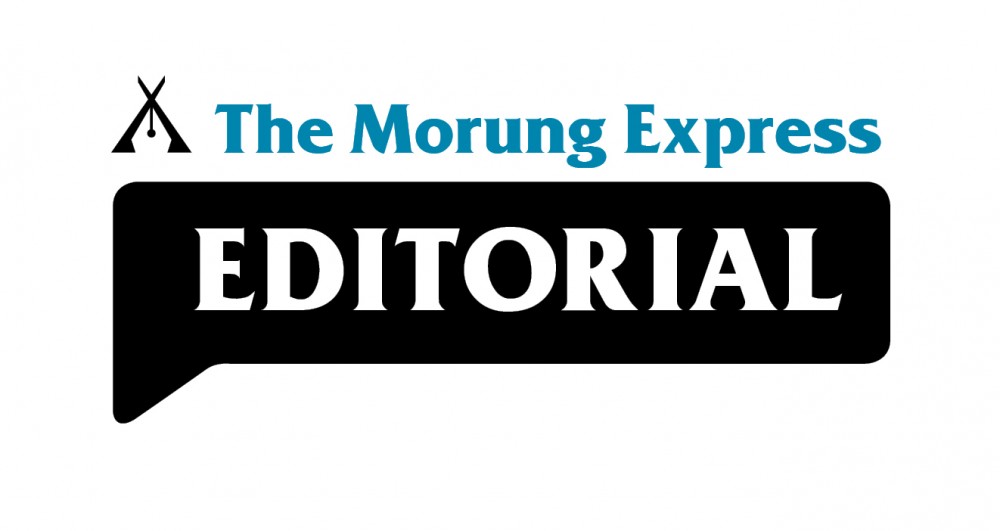
Moa Jamir
The media landscape in the digital age has been proliferating exponentially in the recent past, offering both challenges and opportunities to the existing players. Nagaland is no exception to the phenomenon. Gradually, the print media, the dominant player till the recent past, has to adapt to the changing scenario.
The news, in this context, has become more ‘democratic,’ providing ample space for everyone to engage. “In 2020, television news and online sources have seen significant upticks, while consumption of printed newspapers, has fallen as lockdowns undermined physical distribution, almost certainly accelerating the shift to an all-digital future,” noted the Reuters Institute Digital News Report 2020.
This is an inevitable development, but it also raises many issues about the way news is gathered, presented and disseminated to the general public. Leaving aside the fundamental objective of journalism such as accuracy and fairness, objectivity, right to privacy and other ethical norms, we deal with one pertinent issue – transparency. It has two important aspects - transparency within the concerned news organisations as well as how news is gathered and delivered.
Katerina Tsetsur and Dean Kruckeberg, (2017) “Transparency, Public Relations and the Mass Media: Combating the Hidden Influences in News Coverage Worldwide,” dealt with this issue and Media transparency, as per a Wikipedia summation, is defined to be achieved when: 1) there are many competing sources of information; 2) the method of information delivery is known, and 3) funding of media production is disclosed and publicly available.
To this end, the Council of Europe’s March 7, 2018 guidelines on promoting media pluralism, transparency of media ownership and media literacy issued assumes significance.
Among others, it recommended that member states should “promote a regime of transparency of media ownership that ensures the public availability and accessibility of accurate, up-to-date data concerning the direct and beneficial ownership of the media, as well as other interests that influence the strategic decision making of the media in question or its editorial line.”
“This information is necessary for media regulatory and other relevant bodies to be able to conduct informed regulatory and decision-making processes.”
Another important aspect of transparency as the Press Council of India (PCI) stipulated in its “Norms of Journalistic Conduct” is having a “well-recognised distinction between the editor and the journalists on the one hand and the Manager, the Executive or the Administrator on the other.”
“It is well established that the freedom of the press is essentially the freedom of the people to be informed accurately and adequately on all issues, problems, events and developments. In the discharge of the editorial functions, the editor is supreme and superior even to the owner…That is why there is also an obligation on the management to select a person as the editor who is competent and bears integrity of character and independence of mind,” it noted. This can be extrapolated to any news media that believes in journalistic ethics and conduct.
To some extent, the print media in Nagaland fulfils these conditions. For instance, all are registered with the Registrar of Newspapers for India, a statutory body of the Union Ministry of Information and Broadcasting and are bound by PCI’s norms. However, as the new types of media proliferate, maintaining the transparency of ownership, as well as the distinction between the news and management, become sacrosanct.
Quick perusals of two recent visual mediums as well as two online/social media news platforms in Nagaland showed that most were pretty ‘opaque.’
One of the visual mediums had a website with the “About Us” section and other relevant disclosures; however, it was unclear whether there is a distinction between the management and the editorial/news team with no information available in the public domain. As it is already broadcasting live on the established platform on TV, presumably, there is regulatory filing.
The other visual medium shares news on Facebook, Instagram and YouTube, but there was no further information apart from noting that it is a “satellite channel” from the state on those platforms. As both are visual mediums, at least, the viewers have some idea about who is presenting the news, though ‘behind the scenes’ information is missing.
In the case of two online ‘news’ portals, one operates only on social media platforms while the other had presence in all mediums including a website. However, apart from sharing e-mail and contact numbers, there was no information regarding ownership/editorship or other team members. The former mostly shares un-edited government circulars/notification/updates and other press releases in the form of pictures, while other do both analytical pieces as well as breaking news story.
Devoid of relevant information, the public as well as the news providers, wittingly or otherwise, may become publicity organs of vested interest. The media demands transparency from those at the helm of affairs and other entities but it should also measure itself with the same yardstick. This applies both to traditional media and new media. At the crossroads, the news media in Nagaland should strive to move further with relevant norms and values in place.
For any feedback, drop a line to jamir.moa@gmail.com






